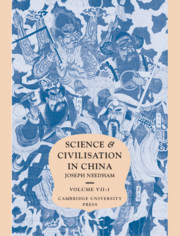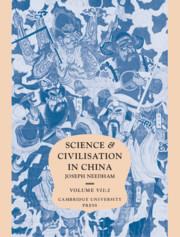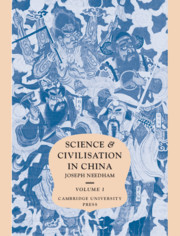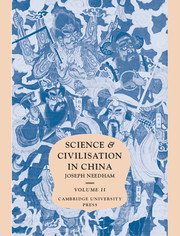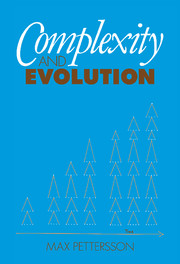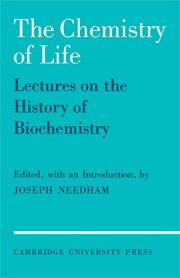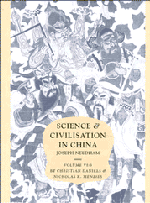Science and Civilisation in China
Science and Civilisation in China Volume V Part 6 is the first of the three parts dealing with the arts of war in ancient and medieval China. The present volume opens with an introduction on Chinese attitudes to warfare in general. Four major sections follow: on the making and use of simple bows; on the crossbow, the standard weapon of the Han armies, and its introduction to the Western world; on the pre-gunpowder forms of artillery, including the invention of the trebuchet; and on the art of siege warfare in which the Mohists were particularly interested. There is a good deal of material on siege-warfare available, and this final section is a substantial one, covering all aspects in detail.
- The reputation of Joseph Needham and of Science and Civilisation in China is extremely high
- There is a good market for military history
Reviews & endorsements
"...readers...will find no other single source that brings together the evolution of Chinese military technology, systematically sets it alongside contemporary developments in the West, and examines the connections between them. This book is essential reading for everyone interested in ancient and medieval European warfare as well as for those who study the art of war in China." Geoffrey Parker, The Journal of Military History
"...a heroic and successful effort by those, including the publisher, who have accomplished it." Robert P. Multhauf, Technology and Culture
"This fine, copiously illustrated volume edited by Joseph Needham and Robin D.S. Yates reminds us how much the excavations of recent decades have changed our understanding of ancient China...Yates explicates incomplete or intractable texts as thoroughly as possible, and his tendency to speculate is balanced by his excellent use of written and archaeological sources....he also highlights the complex ways in which warfare and culture have been linked in China since antiquity. This work is a mine of information on a broad range of topics and indispensable reading for historians of technology, military thought and philosophy, and urbanizations." Joanna Waley-Cohen, Asia
"[An] astonishing and enduring study...[Needham brings] depth of emotion and technical finesse to his task."
Jonathan Spence, New York Review of Books
"Perhaps the greatest single act of historical synthesis and intercultural communication ever attempted by one man."
Laurence Picken, Cambridge University
Product details
March 1995Hardback
9780521327275
620 pages
255 × 199 × 43 mm
1.642kg
323 b/w illus. 5 tables
Available
Table of Contents
- Part I. Military Technology: (a) Introduction
- (b) Chinese Literature on the Art of War Krysztof Gawlikowski
- 1. The military theoreticians
- 2. The military encyclopaedists
- 3. Basic concepts of the classical Chinese theory of war
- general principles of action
- 4. Combat and competition
- 5. Other components of the classical Chinese theory of war
- 6. The main controversies within Chinese military thought
- (c) Distinctive Features of Chinese Military Thought:
- 1. Reasons for its perennial vitality
- 2. A syncretistic tradition
- the non-military approach to war and the duties of soldiers
- 3. The great popularity of military thought among the people
- 4. Military thought in civil life
- 5. The place of the military element (wu) in the Chinese world order
- (d) Projectile Weapons: I. Archery (with Edward McEwen):
- 1. The bow
- 2. The crossbow
- 3. The social role of the bow and crossbow
- Part II. Ballistic Machinery: (with Wang Ling)
- 4. Spring, sinew, sling and swape
- definitions and distribution
- 5. Forms of the arcuballista
- 6. Trebuchets, manned and counterweighted
- 7. Distribution and diffusion
- (e) Early Poliorcetics: the Mohists to the Sung Robin D. S. Yates:
- 1. Early cities
- 2. The twelve types of attack
- Bibliographies.


